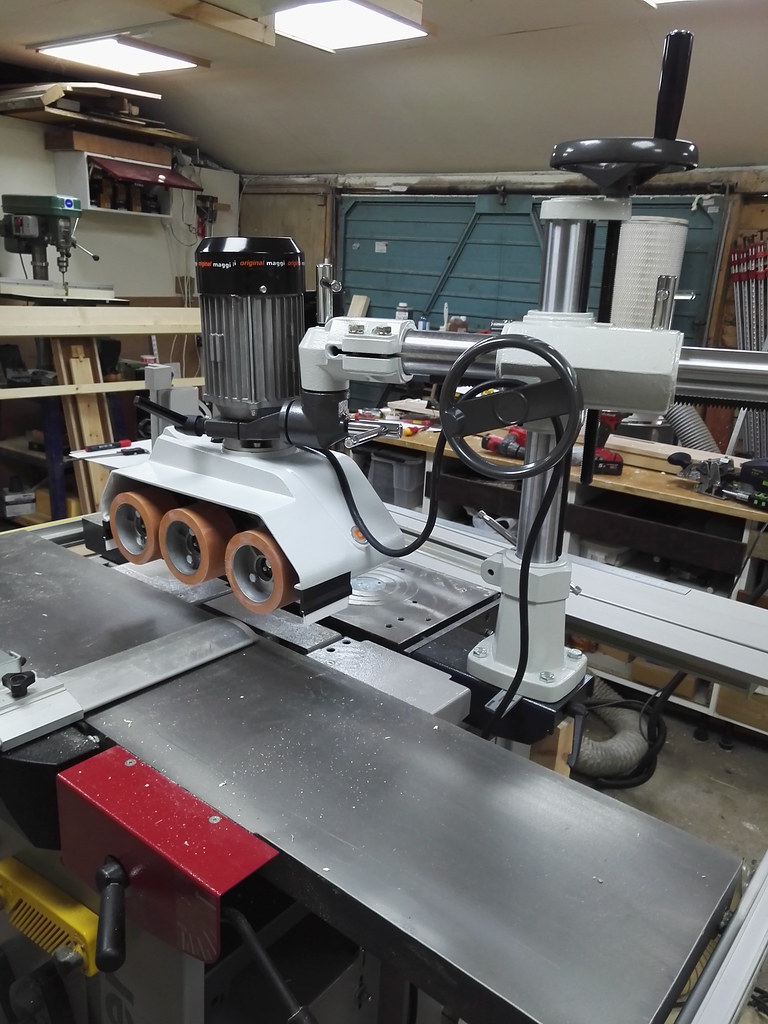I thought this was a good idea for handling pieces that are only a few inches tall. The guy in photo uses his left hand I would use an ordinary push stick there . From a YouTube wood working state training college in US, they have some really fancy, really expensive, posh looking machines.
That said, is that a wrist watch I can see? (hammer)
That said, is that a wrist watch I can see? (hammer)




































